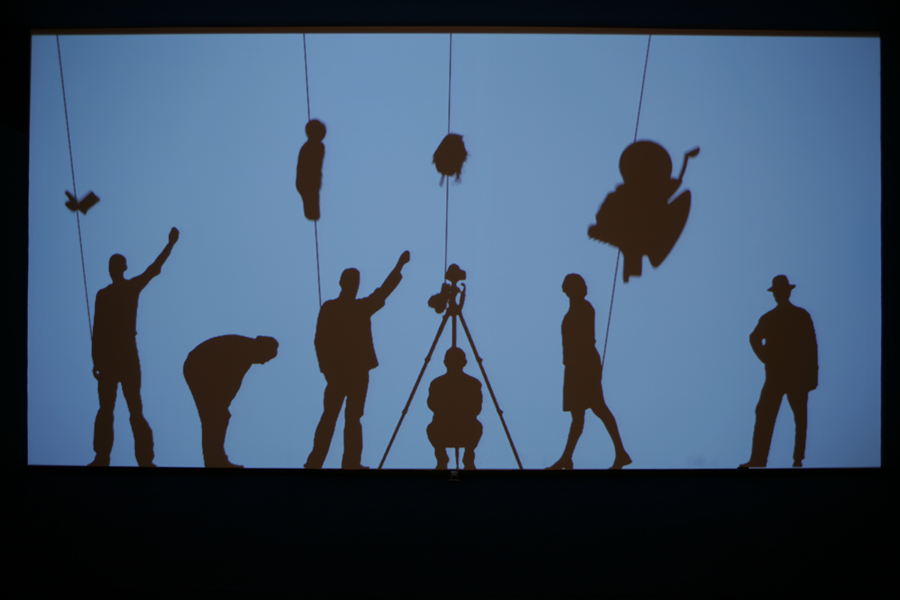The Artist and her Work
Shilpa Gupta was born in Bombay, India in 1976 and she lives and works in Mumbai, India.
Technological subconscious
Since her studies in sculpture from the Sir J.J. School in Mumbai (India) between 1992-1997, this young artist has rapidly become a “regular” in all the large-scale international events (Biennale de Lyon 2009 and 2007, Biennale de La Havane 2006, Bombaysers, Lille, 2006). This intense and endless activity doesn’t stop her from partaking in the “Open Circle” artists collective in Bombay or even in the “Aar Paar” project between India and Pakistan for which she is the co-founder. She reveals her unfailing capacity to adapt to any workplace, under even minimal conditions as long as she can feel the pulse of the city, its inhabitants and its urbanism, all driving elements of her research and performances she creates. This ease also stems from her main working tool – the computer and its numerous potentials, like Internet. What interests her most in technology is its “emotional and conceptional scope”, its ability to question our way of living and beliefs, our psyches and reflexes, our sense of community and prejudices.
Art and science
Shilpa Gupta also designs miscellaneous works where commonplace objects mingle with technological ones, or even having technology become “human” like in the monumental work Singing Cloud (2009) presented to the Laboratoire in Paris. The “skin” of this hanging cloud is made of a combination of microphones and acoustic elements. Reacting to the environment, between sleep and fits and starts, this hive becomes a polyphonic creature, shaped like a gigantic fly’s eye from which emanates every now and again, a multitude of voices, souvenirs and languages. We are thus far from cold technology but closer to the irrational. Technology is a vehicle, material to manipulate, constructed between sound, image and perception.
The artist regularly works with researchers, scientists such as Noam Chomsky whom she has questioned regarding her present vision of the media. According to her, the common point between art and science is definitely this timeless research to understand the world. Shilpa Gupta is also interested in the fear phenomenon, experimenting it very concretely by asked people to walk around public spaces with a bag, suitcase or backpack with “There is no explosive in this” written on it. This sentence has become the title of a photographic series which traces back this radical experience, highly interactive with no technology involved.
Interactivity, imagination and temporality
An artist-in-residence at the MAC/VAL in 2007, Shilpa Gupta produced three works: Untitled (Shadow 3), Memory and Don’t worry, you too will be a star which remained part of her unceasing research and her principle of working with other professionals. These works all mirror each other.
In the installation Untitled (Shadow 3), the visitor’s shadow is literally projected onto a screen on the wall opposite. “Unidentified” shadows (objects, individuals) begin to fall from the sky with each movement, coming to dialogue with the “living” shadow of the visitor. This whole installation becomes like a sort of collective and physical video game with no remote control or scenario to follow, but more like a blank page for improvisation – awaiting the unexpected. It becomes a more serious game, leaving room for time to think when, at the end of the cycle, the shadow theatre makes the visitors disappear, the latter having drowned under the sea of objects. The cycle also finishes with words focused on the human conditions. This contemporary vanity echoes with the cynicism found in Don’t worry, you too will be a star, a mere lit garland sparkling for the spectators’ pleasure. Without any added comment, it might be added that it reflects our present-day world where being famous remains an unexpected factor but also one which becomes more reversible and ephemeral. Invitation for the opposite, Memory are letters written “through” the museum walls, making the visitor stop and taking a glance between the outside and the inside …. The junction of these shutters is also an invitation to project oneself in the future, after past memories find a place to lie in peace. We can notice here the meaning of technological research animated by Shilpa Gupta who emphasized the obvious – far from any disembodiment, a Utopic future and a past unremittingly revolved by progress, technology only operates in relationship with time, the living, thought and Man.
Biographical Extract
Shilpa Gupta was born in Bombay, India in 1976. She lives and works in Mumbai, India.).
She studied to be a sculptor but she often creates works from the million possibilities offered by new technologies – Internet sites, touch screens or interactive projections.
The visitor is invited to experiment with her works where the artist raises political or philosophical issues (racial violence, human organ traffic, disappearance of loved one in armed conflict, etc).
